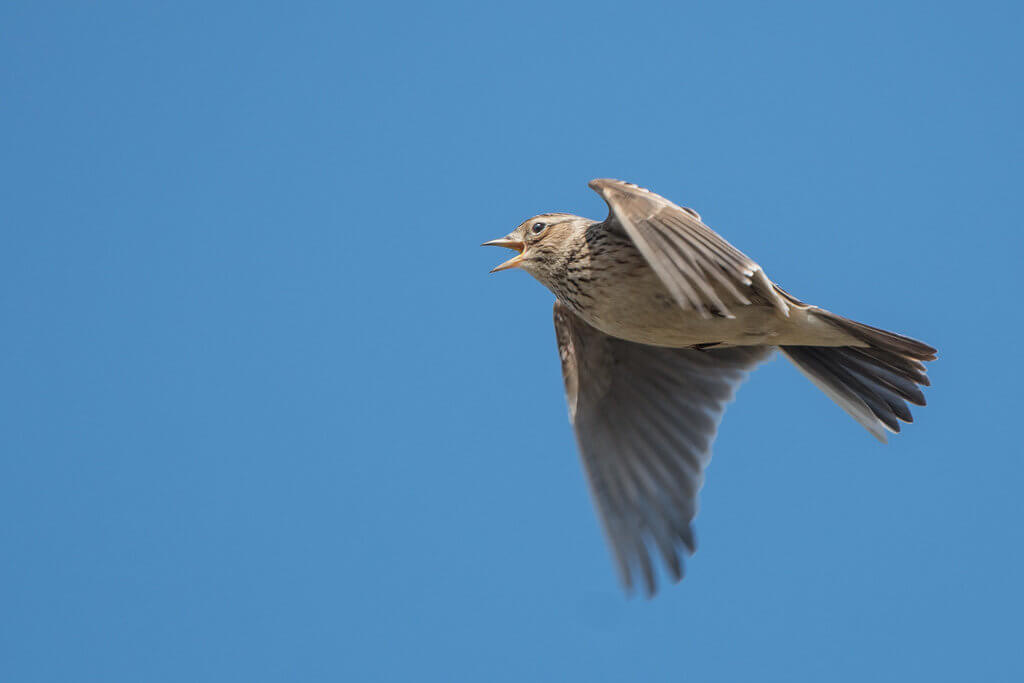
Hail to the Skylark – one of the finest songsters of all? Don’t you agree?
You won’t find this species very often in your garden but if you live near farmland you may hear its song cascading over everything. This is a pretty unmistakable song – it goes on for ages, it’s loud, it’s musical and it’s likely to be coming from above your head in open country as the Skylark sings mostly on the wing in a hovering or circling song flight before dropping as it shot, to the ground.
Here’s one from Germany:
And another from France;
And one from the UK:
Aren’t they just fantastic?!
We heard Skylarks from the garden regularly until about 20 years ago. Notable other songs from the garden: Turtle dove purring for the whole of August 1998, a summer Wood warbler once for a few weeks and Nightingales within a short walk, now long gone. Chiffchaff dominant today.
Agree, and the Woodlark’s song is very fine too, especially when high up from under clear blue skies. But both songs are equally fantastic in near total darkness, long before the dawn chorus really gets going. These two species have the same ideas about things …
Finally! Our garden has few bushes and no trees, is surrounded by farmland and, until recently, in Winter would occasionally have a Snipe or two. Yup, despite our lack of ‘common or garden’ birds, Skylarks are our morning awakening, always a joy to hear, and even more so in the current circumstances. I won’t hold my breath for your thoughts on the merits of Common Gull and Oystercatcher calls.
Having spent time twenty or so years ago catching and radio tracking Skylarks including in the breeding season it is a rather special song to me as well as a splendid one. Breeding adults are easy to catch if you know how with very different techniques for each sex, for a fairly plain bird lovely in the hand and quite feisty. One of my favourite birds.
Blue sky question: love to know what that tracking experiment was about.
Looking at where they fed and their activity budget as part of a project looking at the potential effects of agro pesticides to non-targets. Of the several bird species we tracked probably the easiest in the breeding season one of the hardest to trap and track outside it. We also in the end radio-tracked Yellowhammers, Linnets, Wood Pigeons, Brown Hares and Wood Mice plus radio and satellite tracking of Grey Lag Geese ( radio tag data too poor on this species).
Thanks Paul. Can I access the results anywhere – especially re Wood Pigeon and its end of breeding season foraging activity?
I don’t think so Murray it was all work for DEFRA although some of it may be accessible I have no idea how.